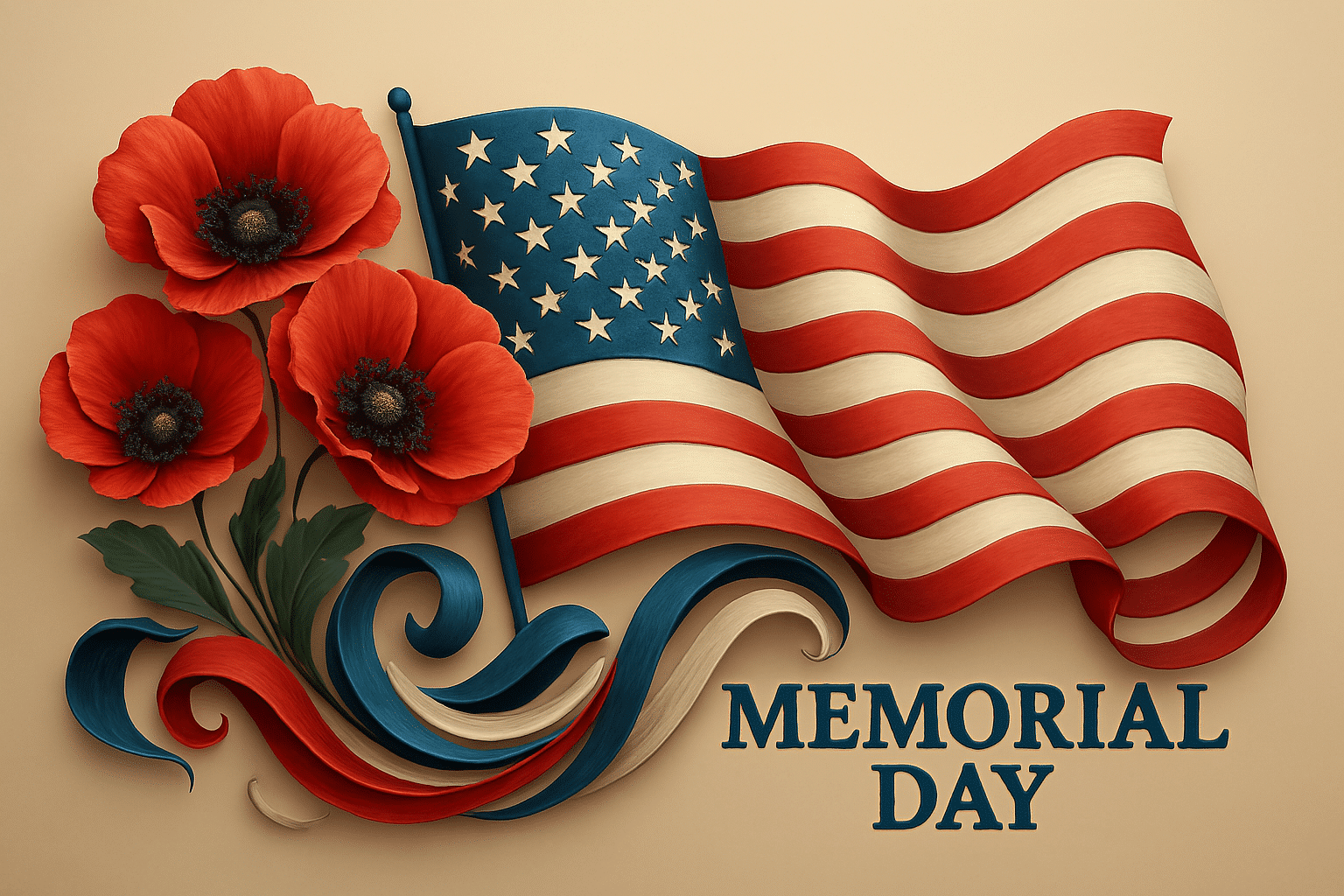What is Memorial Day?
Memorial Day is observed each year on the last Monday of May in the United States. It is a federal holiday that honours all U.S. military personnel who died while serving in the Armed Forces. The day is marked by remembrance, reflection, and national gratitude.
While many associate the day with the start of summer, its meaning runs far deeper. Memorial Day is a solemn reminder of the cost of freedom and the people who gave their lives to protect it.
History and Origin
Memorial Day began after the American Civil War as a day to remember Union soldiers who had died in the conflict. It was originally known as Decoration Day, as people decorated graves with flowers and flags.
The first official national observance took place on May 30, 1868, following a call by General John A. Logan. Over time, the holiday expanded to honour all American service members who died in military service. In 1971, it became a federal holiday, and the date was fixed as the last Monday in May.
Memorial Day now unites Americans in remembering the fallen, with traditions that span generations and communities across the country.
Who Participates in Memorial Day?
- Military families: Visit graves, attend ceremonies, and reflect on the loss of loved ones.
- Veteran organisations: Organise parades, commemorations, and remembrance events.
- Cemeteries and memorial sites: Host ceremonies, flag placements, and moments of silence.
- Schools and educators: Teach students the meaning and history of Memorial Day.
- Citizens and community groups: Join in local events, volunteer, or observe a moment of reflection.
Slogans and Themes
Memorial Day is often associated with slogans such as “Remember and Honour,” “Never Forget,” and “All Gave Some, Some Gave All.” The themes are solemn, respectful, and focused on remembrance. The tone of the day is reflective, with an emphasis on sacrifice, gratitude, and national unity.
Colors symbols and patterns
Colors
- Red: Stands for courage, sacrifice, and the lives lost in battle.
- White: Symbolises purity and remembrance.
- Blue: Represents loyalty and justice, honouring those who served with dedication.
Symbols
- American flag: A national symbol of pride, flown at half-mast in the morning, then raised in honour.
- Poppy flower: Inspired by the poem In Flanders Fields, red poppies are worn or displayed to remember the fallen.
- Military graves: Marked with flags, these resting places are central to Memorial Day observances.
Patterns
- Stars and stripes: Common in flags, banners, and clothing to show national pride.
- Poppy motifs: Often used in wreaths or artwork to symbolise remembrance.
- Camouflage patterns: Sometimes worn or used decoratively to honour military service.
Most Used Hashtags
- #MemorialDay
- #HonorTheFallen
- #RememberAndHonor
- #NeverForget
- #MemorialDay2025
How to Celebrate Memorial Day:
- Visit a memorial or cemetery: Place flags or flowers on the graves of fallen soldiers.
- Attend a remembrance event: Join local ceremonies, parades, or services in your community.
- Pause for a moment of silence: At 3:00 PM local time, take a minute to reflect and honour the fallen.
- Display the flag: Fly the American flag according to tradition, especially at half-staff in the morning.
- Learn and share: Read about the history of Memorial Day and share its meaning with others.
Why is Memorial Day Important?
Memorial Day is a powerful reminder of the lives lost in defence of the country. It offers a moment to recognise the real cost of freedom and express gratitude for the men and women who made the ultimate sacrifice. The day fosters national unity and personal reflection.
It is not a day for celebration but for commemoration. Through remembrance, we honour the fallen and carry forward their legacy with respect and resolve.
Features
Last Monday of May: Memorial Day (United States)
Why do you keep falling for the same type?
Read the article Lovemaps: the hidden blueprint of our love.

